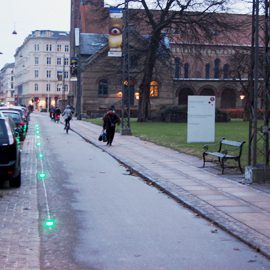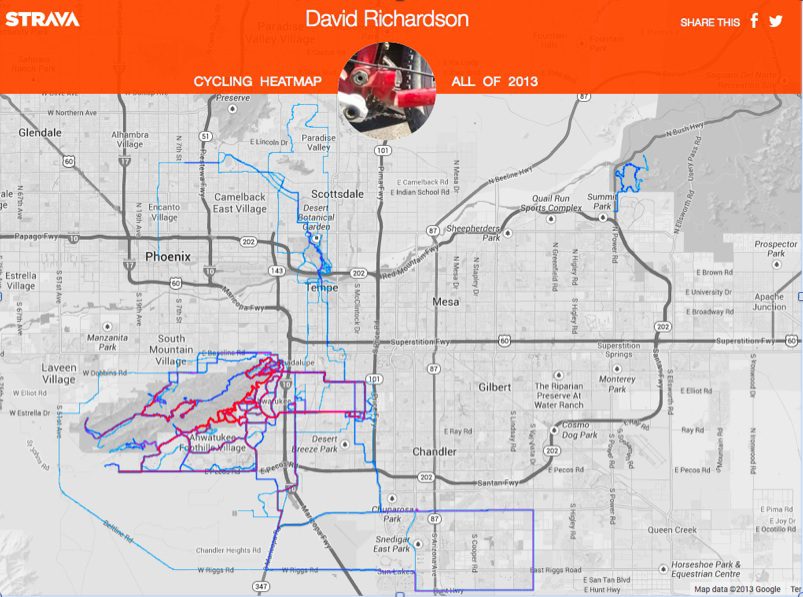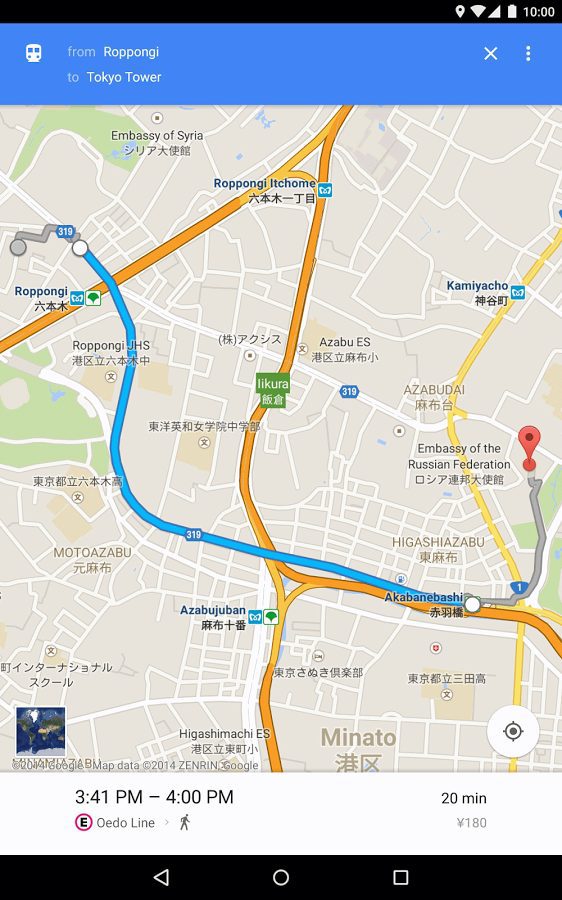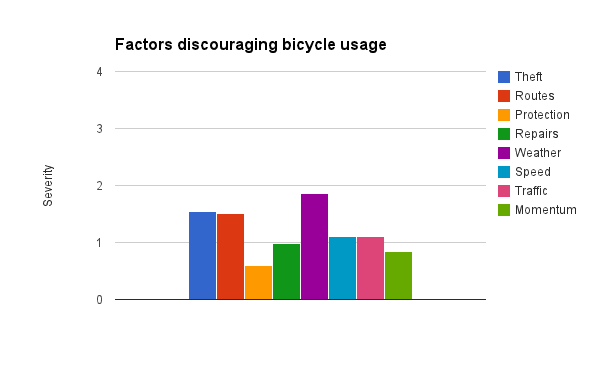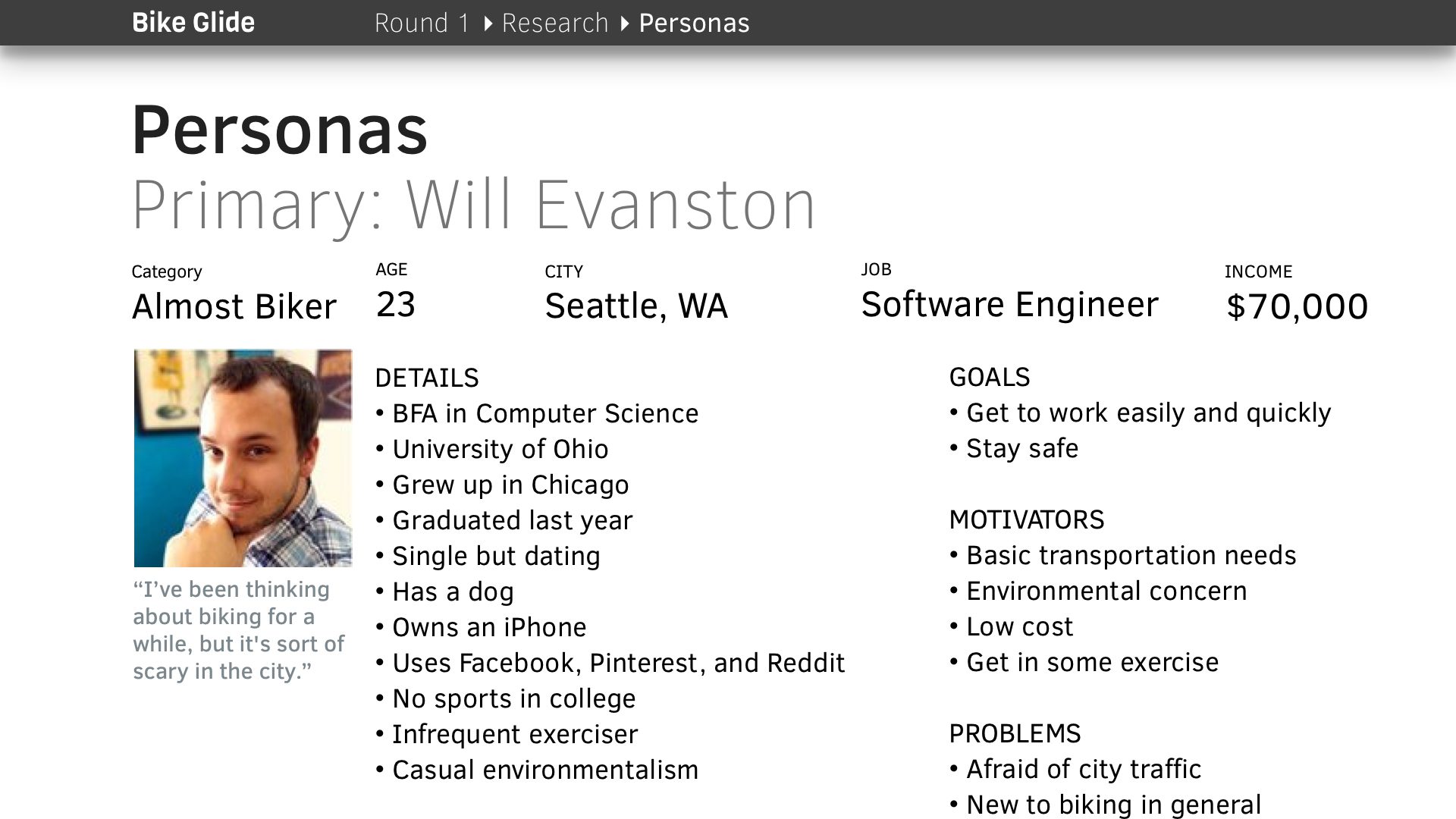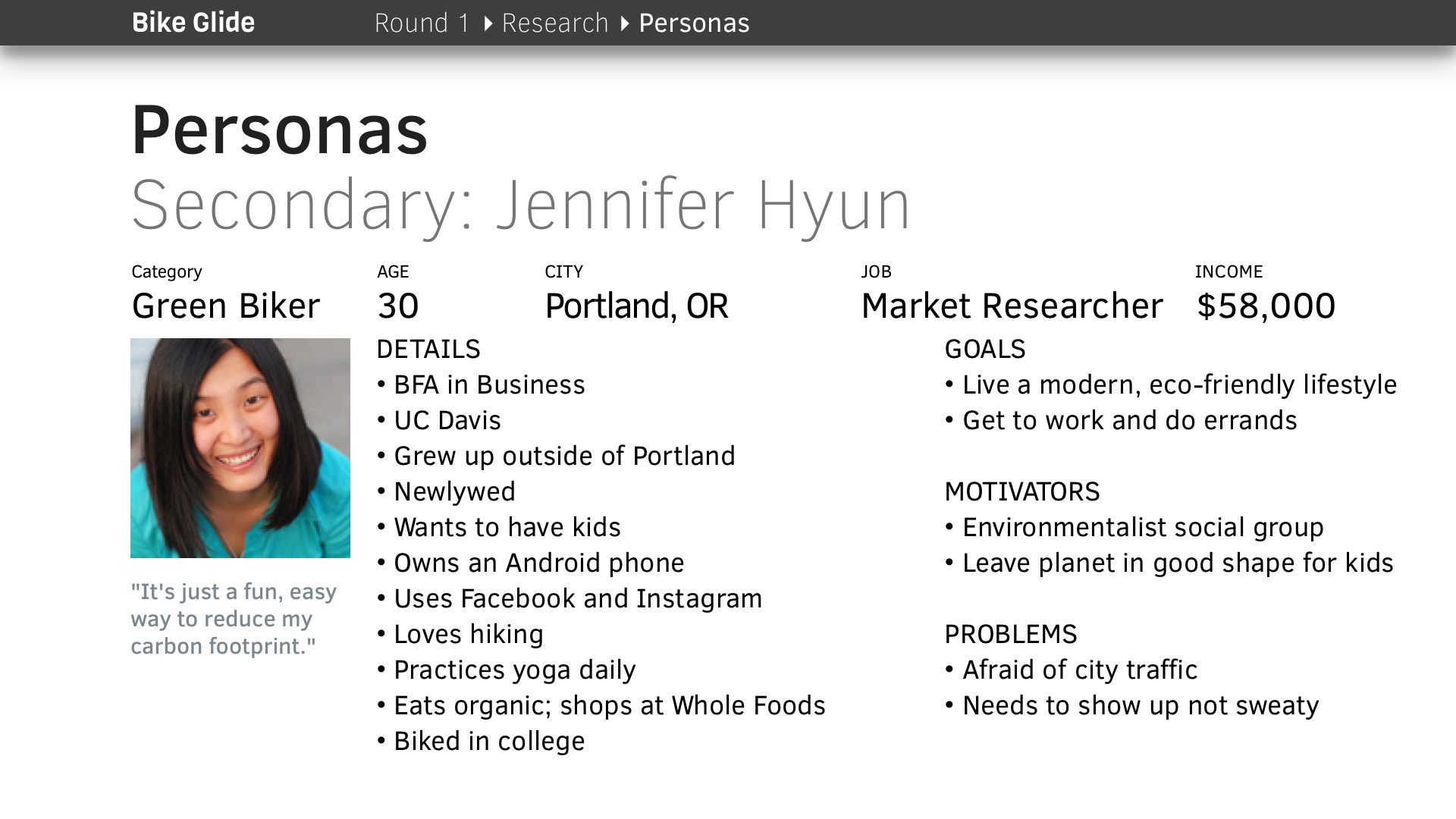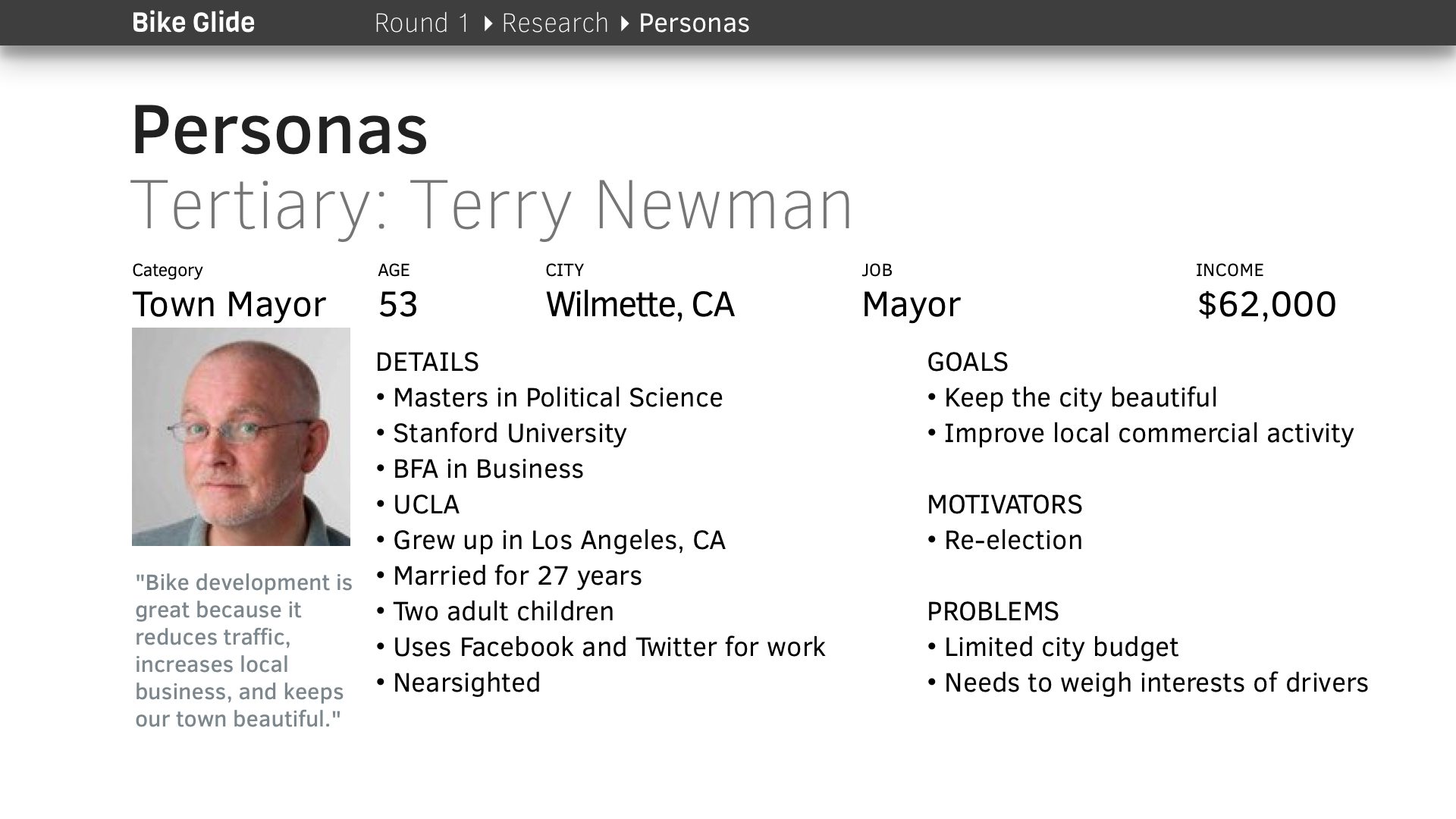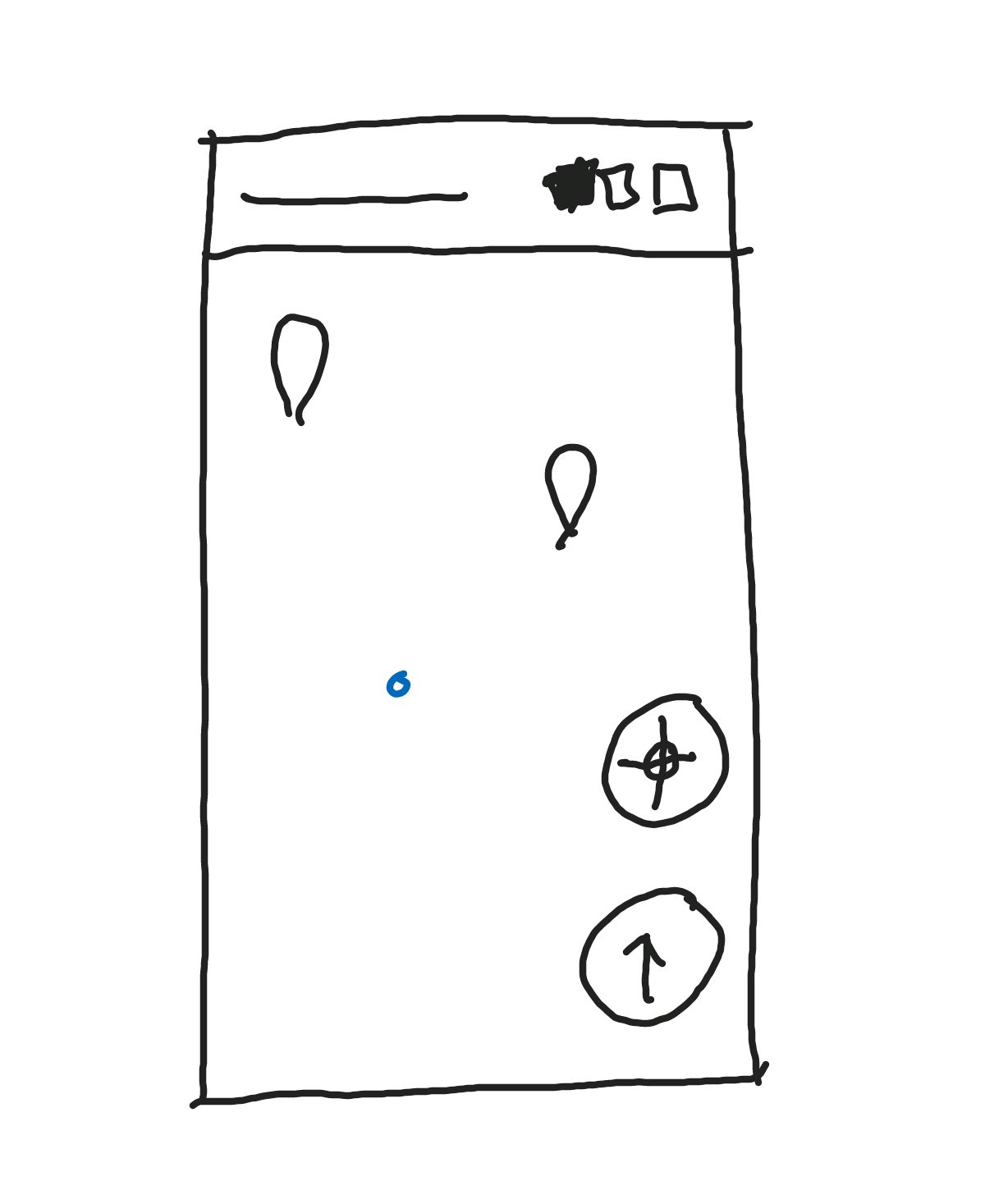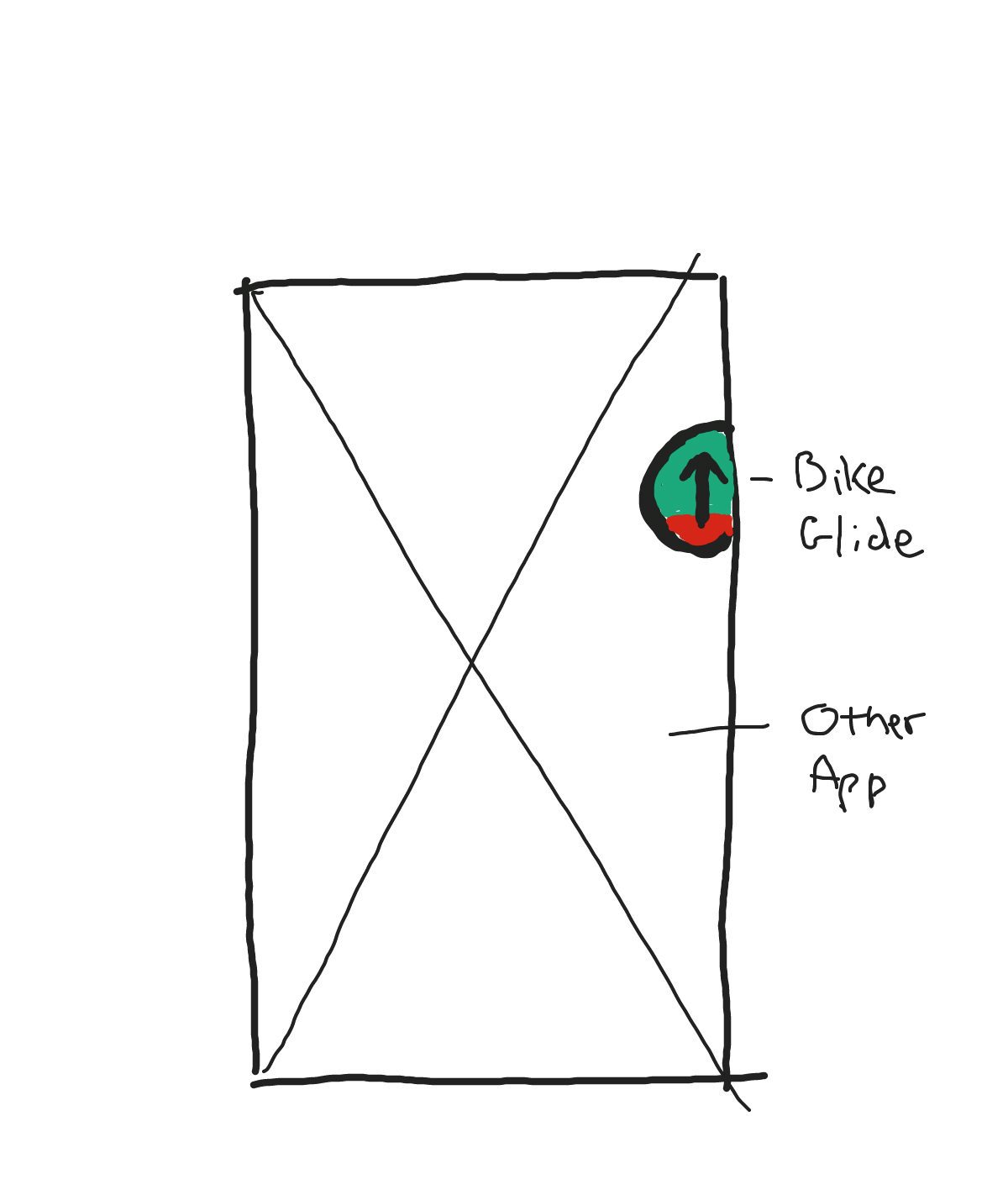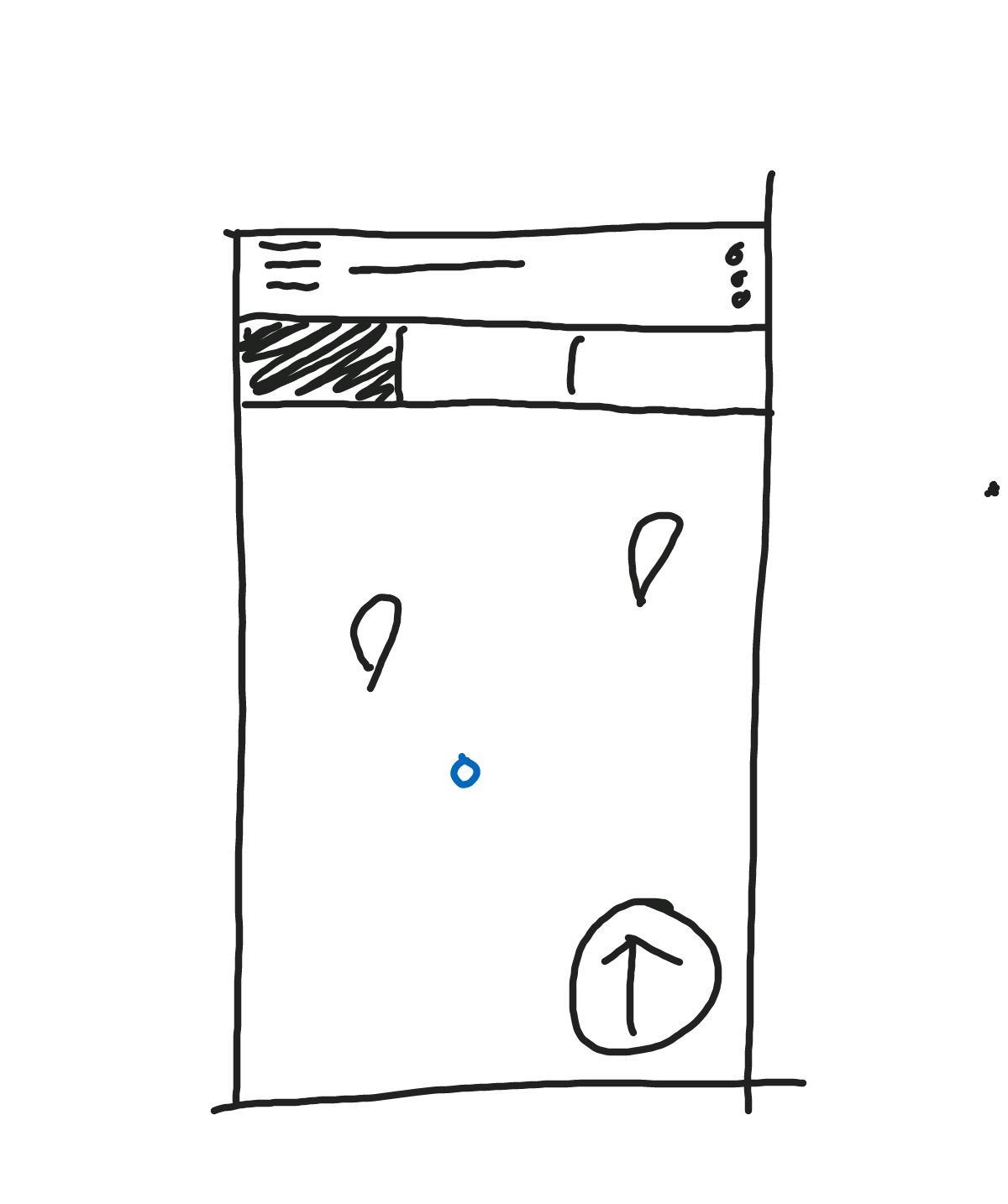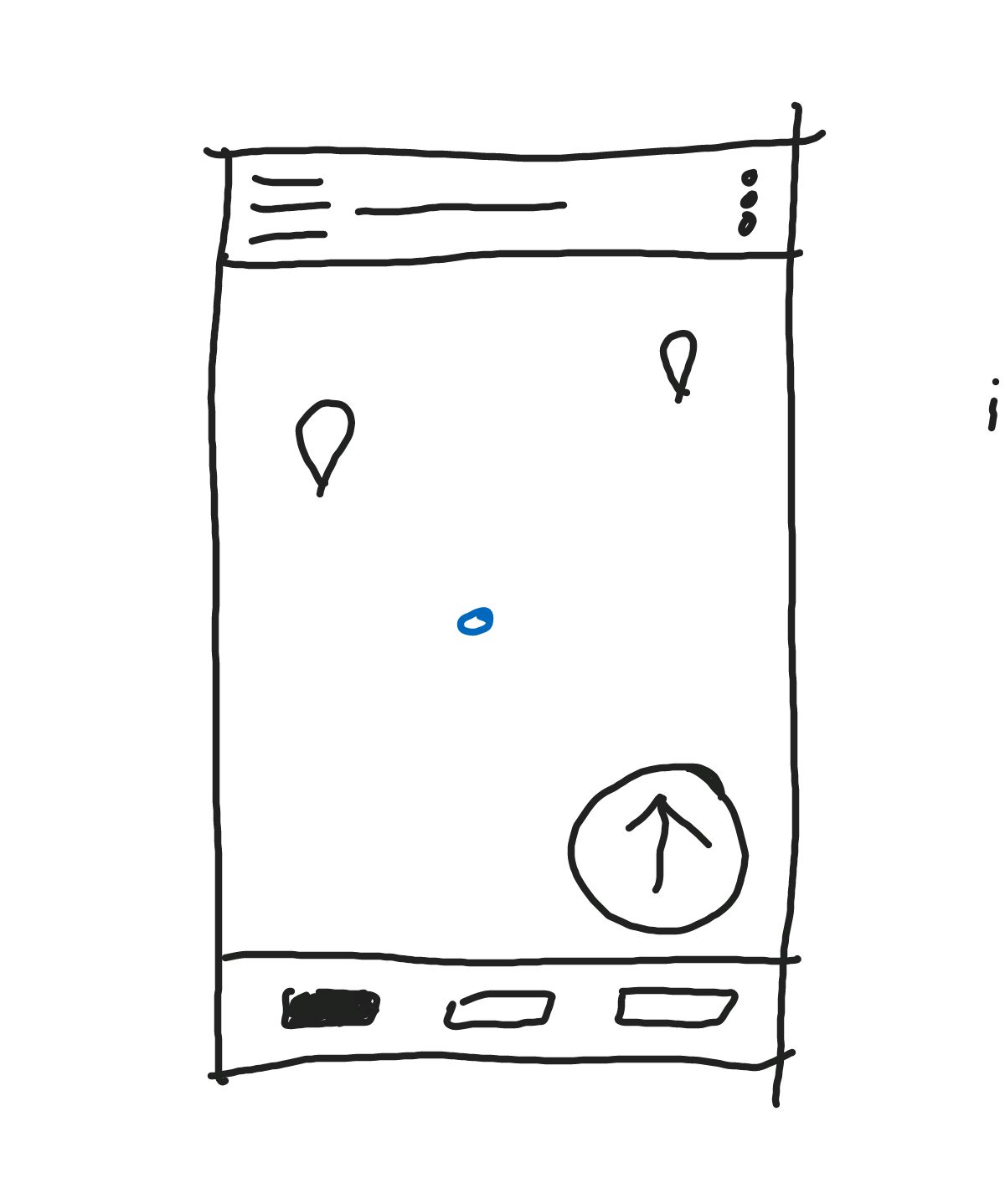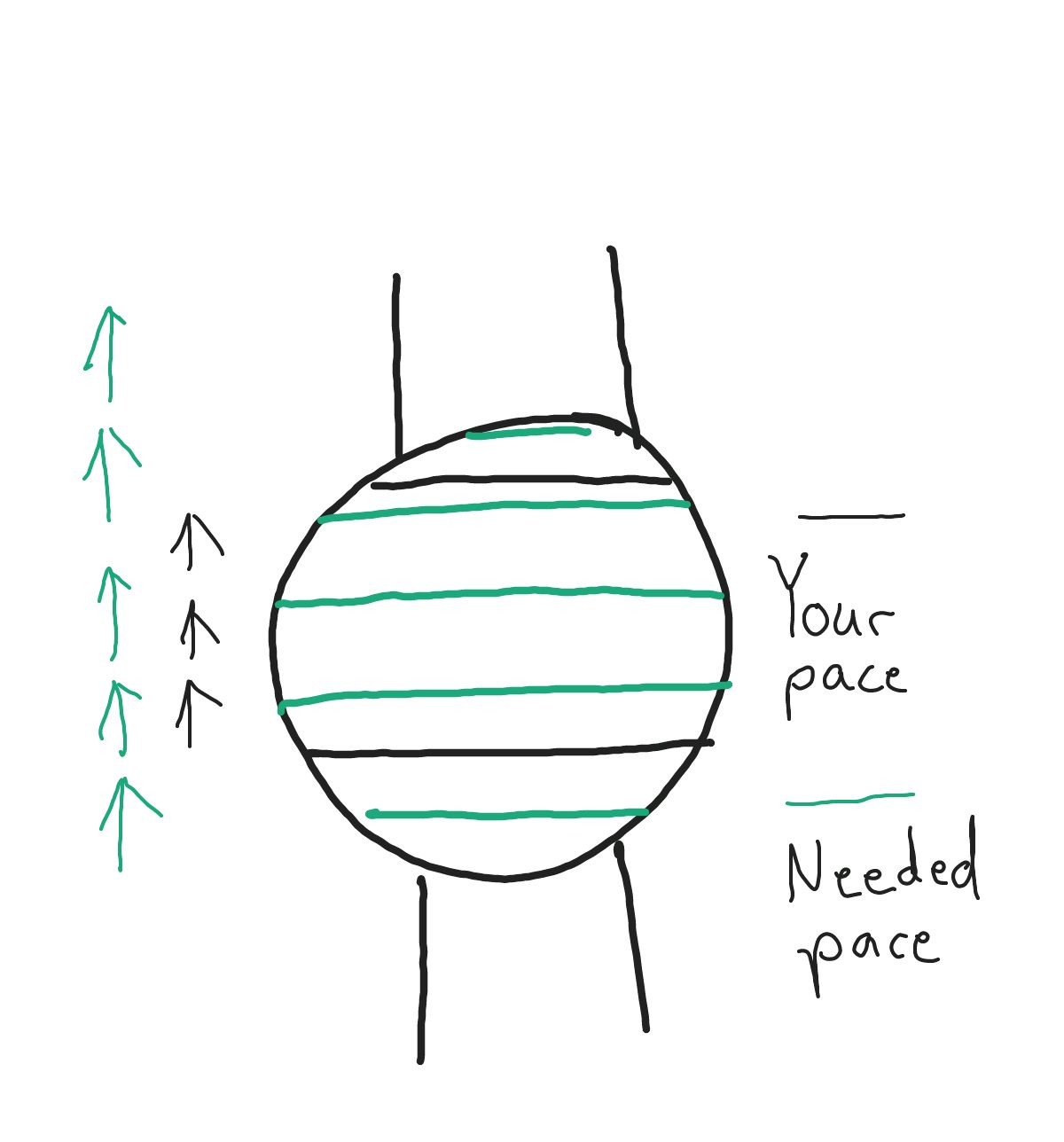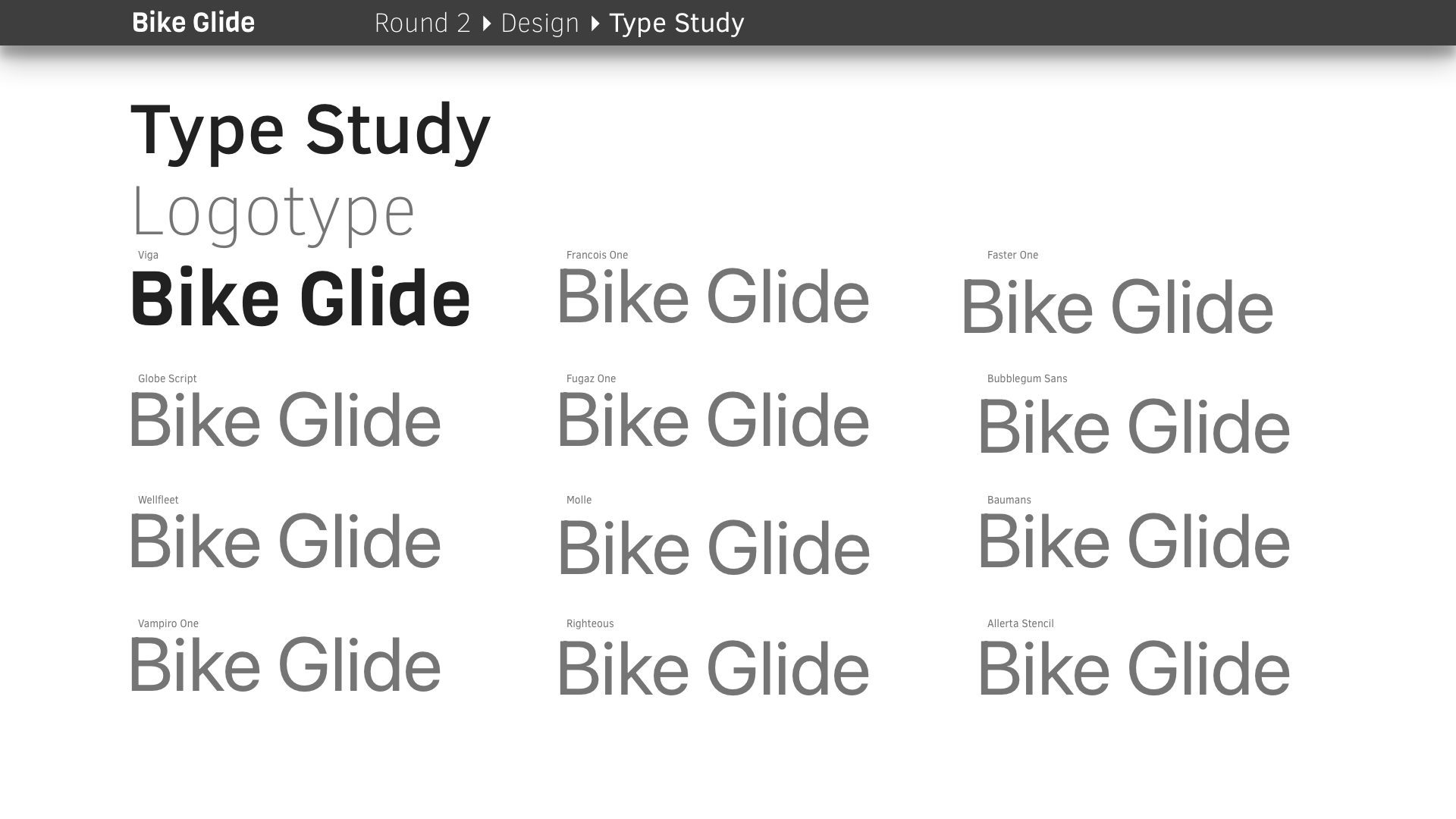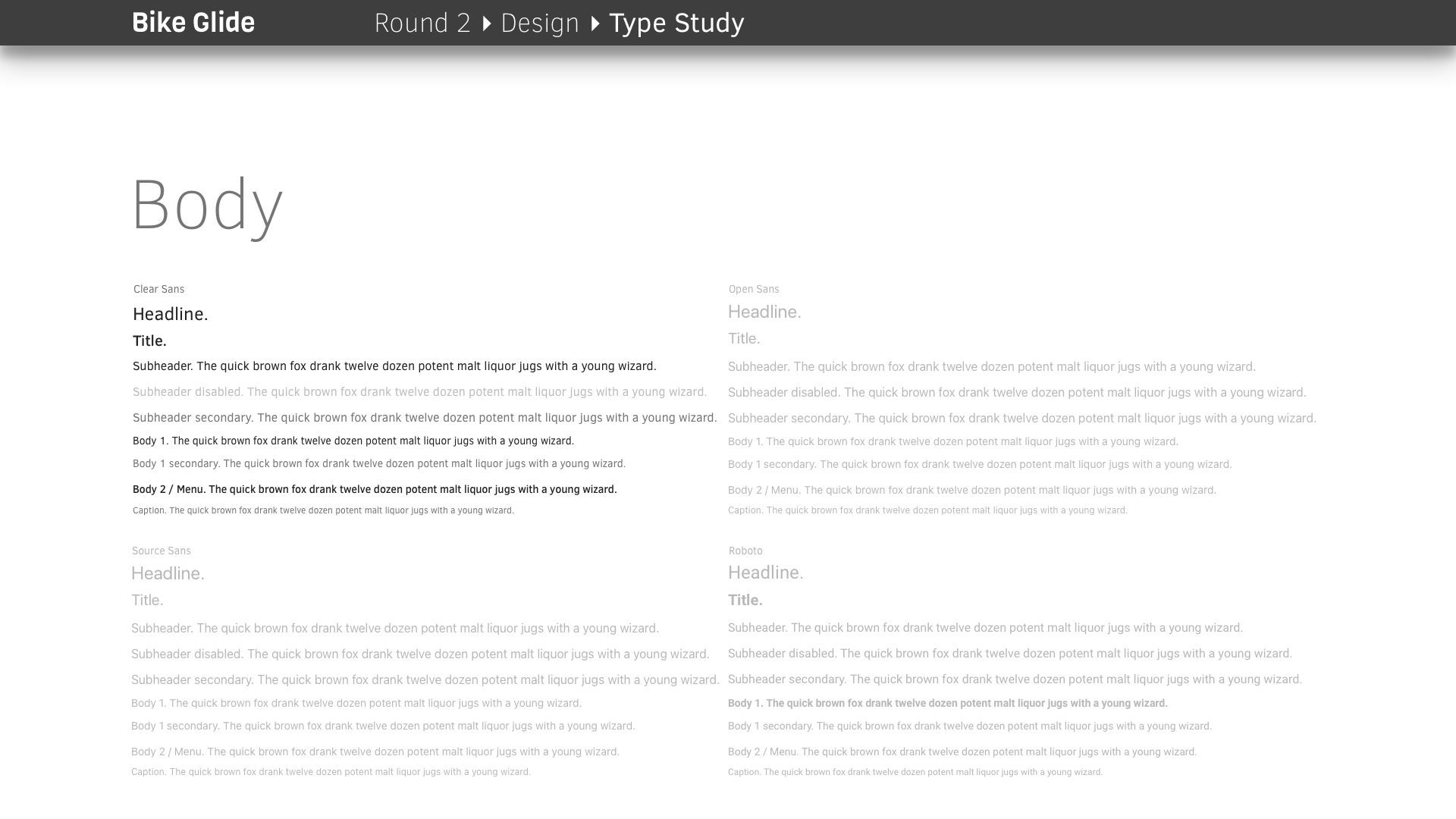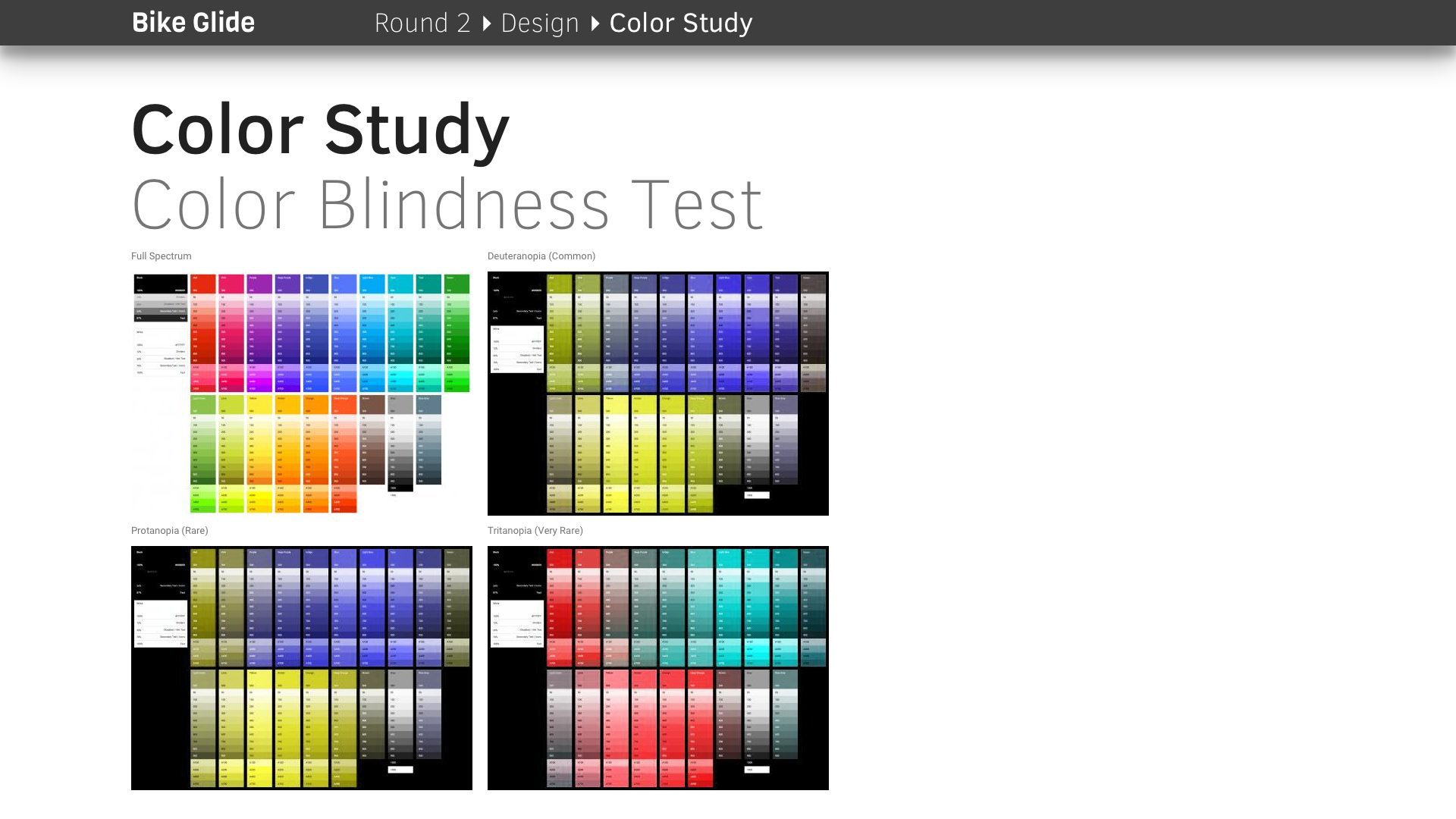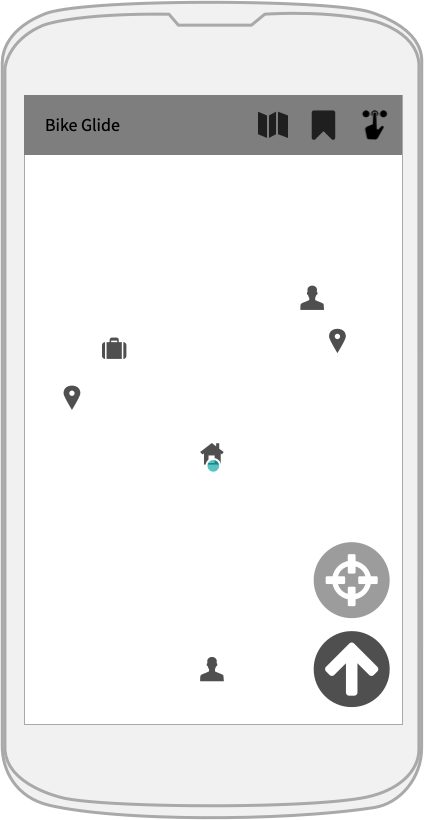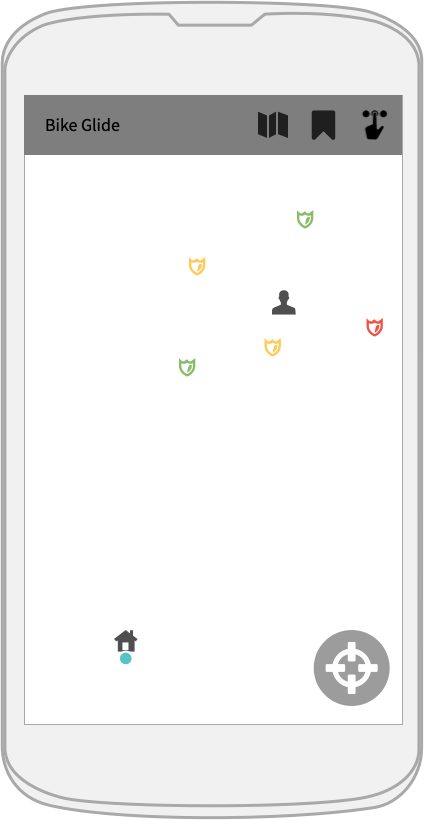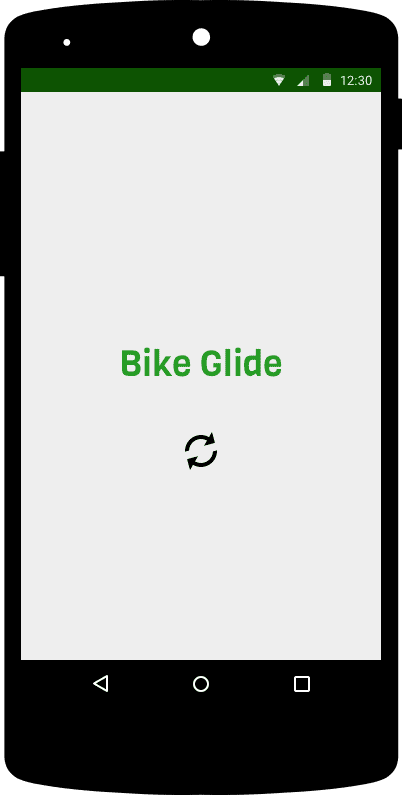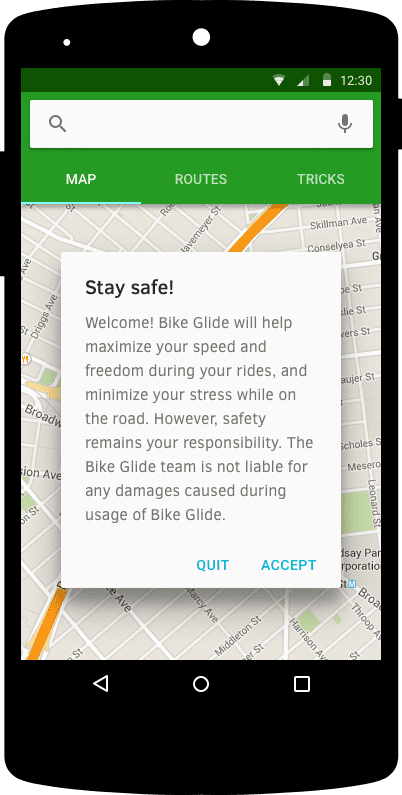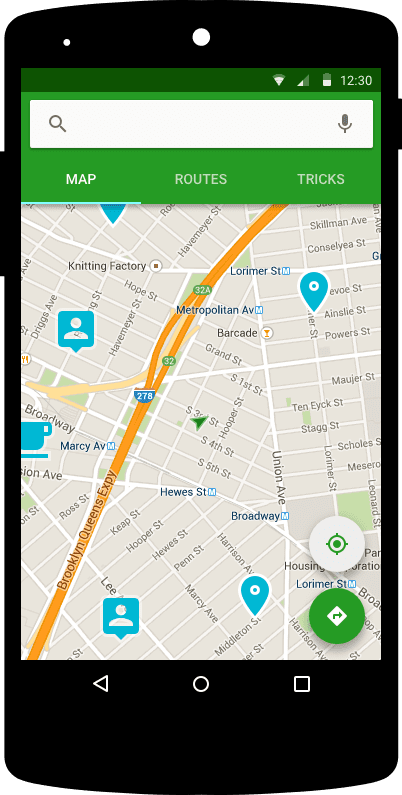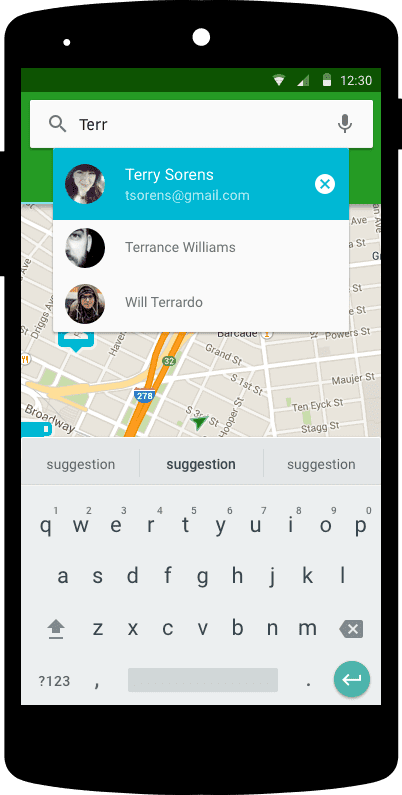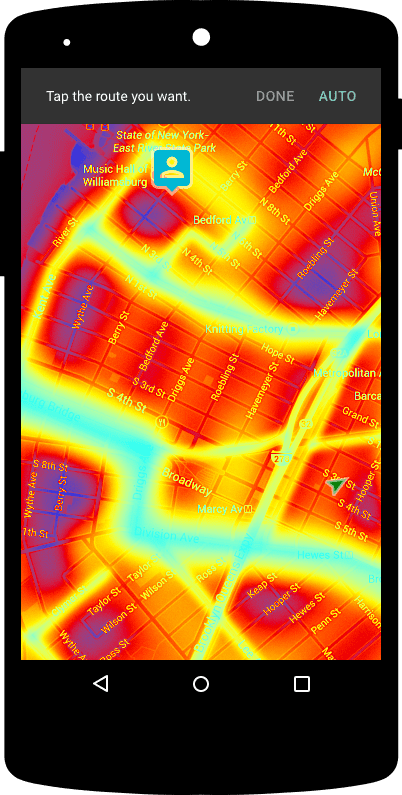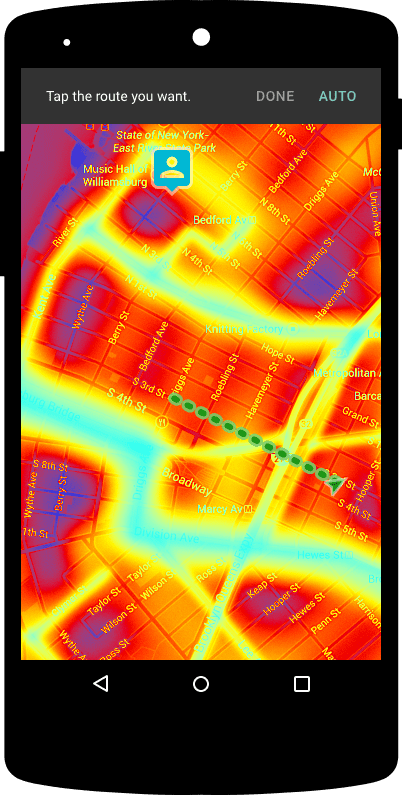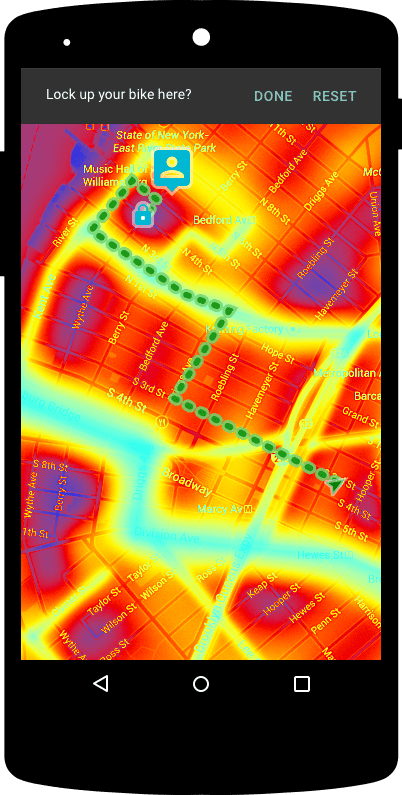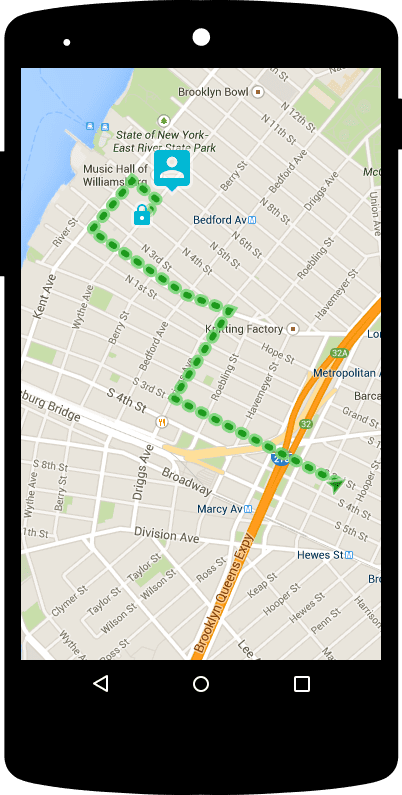Quick Summary
Bike Glide was a mobile app I designed as a school project. The concept was to make an app for people who are interested in, but hesitant to begin, biking around their city. Based on my research, I ended up focusing on helping users pick a route that incorporated locking their bike somewhere it'd be less likely to be stolen.
Methods
- Contextual analysis
- Survey
- Pilot study
- Interviews
- Stakeholder map
- Keyword map
- Personas
- Rapid sketches
- Wireframes
Tools
- OmniGraffle
- Sketch
- xScope
- Google Forms
- Google Hangouts
- Pens, notebooks, post-its, whiteboards, etc.
Products
- App screens demonstrating the flow from loading to picking a bike route, including where to lock the bike
Outcomes
- More than 300 people expressed an interest in using the app if I ever actually made it
- Learned about how to organize lots of people for group interviews remotely
Introduction
“How might we encourage more people to start riding a bike?” was the guiding question for this project. The answer, I believe, is to identify and alleviate the factors that keep people from starting. Anybody who already rides might also benefit, but for the most impact with the least resources, the focus should be on people who are already thinking of starting but hesitant.
Research
Contextual Analysis
To begin, I looked into how other places were already serving bicylists. One of my early inspirations was the city of Copenhagan, which has a Green Wave program that lets bicylists easily maintain a pace that will let them catch only green lights. I also looked into apps that were designed for personal transportation in general, with extra attention paid to apps that are already making special efforts to serve bicyclists.
Survey
To make sure I wasn't just designing for myself, I created a survey to find out people's thoughts about bicylists. Because I was especially interested in people who aren't yet biking, I made sure that I could isolate that group for special attention, but I still wanted to hear from people already biking to see where they had already discovered solutions to the problems keeping others heistant from starting.
Pilot Study
The most enthusiastic of survey respondants also graciously donated their time to what was essentially a group interview. Up until this point, I'd only participated in group video chats organized by other people, so conducting the pilot study taught me a lot about how to prepare participants. (This was before the pandemic. Nowadays, I think people are already more likely to know about things like how to get their cameras working and eliminate microphone feedback, but I still think it was useful to walk people through these kinds of issues.)
Keyword Map
Referring to the survey and my notes from the pilot study, I made a mindmap of keywords that I felt captured the prevailing hopes people have about bicyling as an activity.
Interviews
Since so many of the issues related to urban bicyling are affected by the decisions of municipal leaders, I tried to interview city employees in various west coast towns.
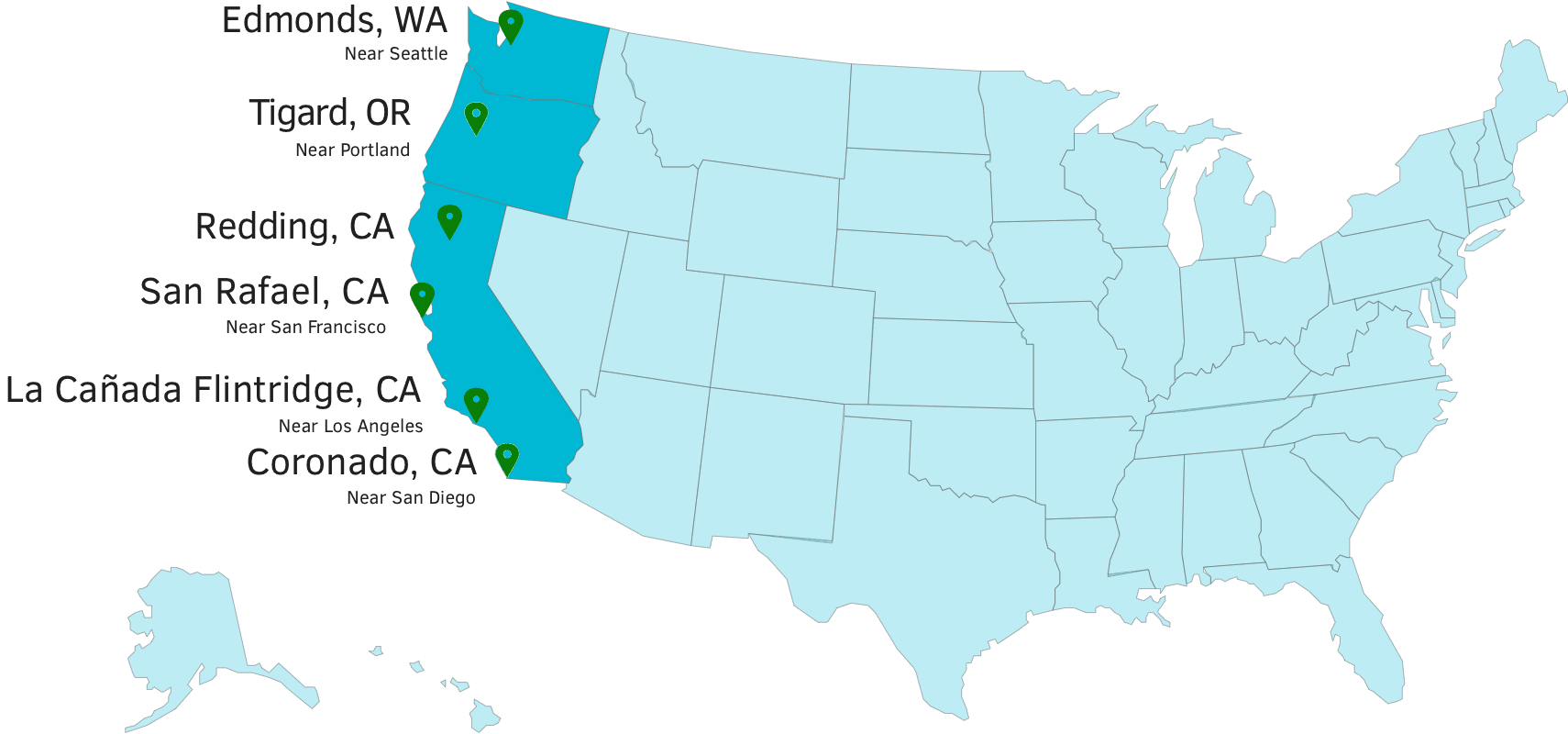
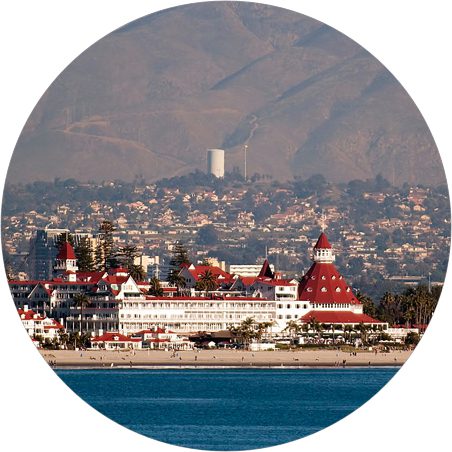
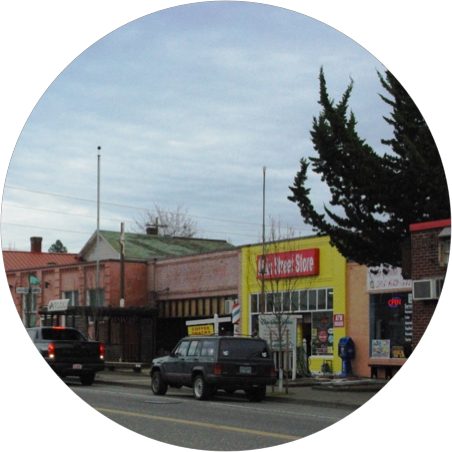
Ultimately, I was able to interview the mayor of Coronado, CA (my hometown) and an urban engineer in Tigard, OR. By talking to them, I was able to get a better sense of which issues lended themselves well to cooperation.
Mockups
The direction I ultimately pursued based on all my research was focused on helping people pick a bike-friendly route that ended in a safe place to lock up their bike near their actual destination. This was accomplished by creating a heatmap by combining municipal data of reported bike thefts and best practices related to how busy an area is at a partiular time. Additionally, I made it so that users could easily integrate their contacts and favorite destinations, and create custom routes simply by tapping desired waypoints.
Conclusion
More and more people are becoming interested in switching to biking as their primary means of getting around. Urban planners are starting to think more about how to make cities friendlier for bicylists, but there are still opportunities to specifically encourage people who are hesitant. Helping people find a safe place to lock their bike would address one of the most common concerns that keep people from starting, and would also be useful for people already biking.
Think I might be a good fit for your team?

